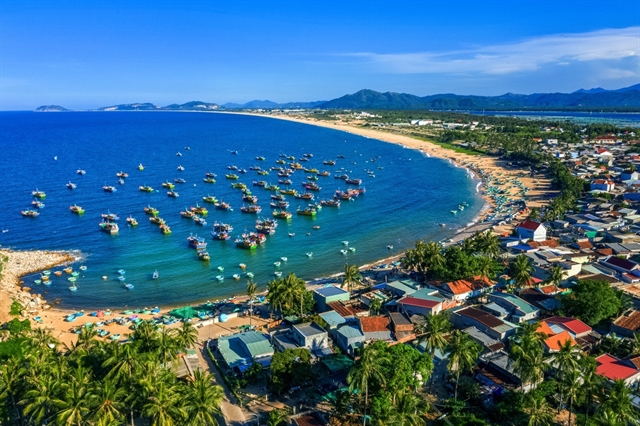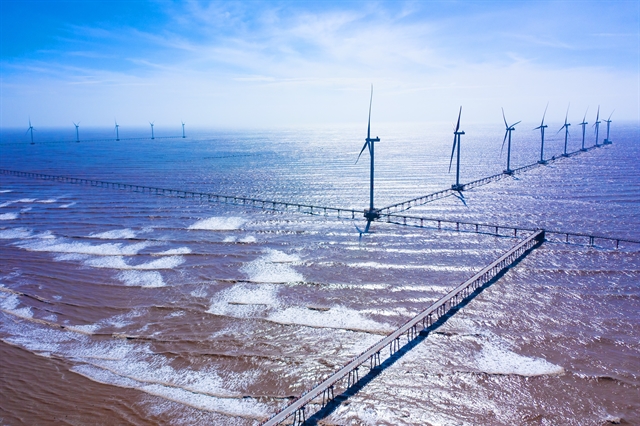

15/08/2023
National marine spatial planning is a multi-sectoral plan to delineate and arrange reasonable marine space for different sectors and fields based on integrating marine-related sectoral plans. Thereby, it helps to make orientations and establish plans to use marine space and resolve overlaps and conflicts in the exploitation and use of marine resources and space.
Lessons from Norway
Mrs. Hilde Solbakken, Norwegian Ambassador to Việt Nam, shared a lesson from Norway that she thinks it will be the most useful to Việt Nam in compiling the national marine spatial planning. She said Norway’s integrated approach to the management of oceans is a triangular process, involving the Government, stakeholders and knowledge.
First, at the Government level, it involves all the Ministries that have responsibilities linked to ocean activities. This includes ministries dealing with fisheries, energy, environment, local affairs, labor issues, justice, defense and foreign affairs. Therefore, a strong political commitment from the Government is crucial.
The second part of the triangle involves all relevant ocean-based industries and other stakeholders: fisheries, aquaculture, petroleum and shipping, but also environmental Non-Governmental Organizations, labor unions and local communities. The Government engages with all these groups in different ways, through meetings or public hearings to seek their comments on draft texts. This helps to ensure that policies and regulations are made in an informed and inclusive manner.
Third, reliable and up-to-date knowledge is crucial about environmental factors as well as developments in ocean-based industries. Ocean-based industries have a vital role to play in creating economic value for Norway. In addition, new industries are emerging - for example, offshore wind power, marine bioprospecting, offshore aquaculture, seabed mineral extraction and carbon storage below the seabed. We need more knowledge and better methods for estimating the cumulative environmental effects of all pressures on marine ecosystems. We also need to know more about the impacts and risks related to climate change and about opportunities for climate change adaptation in marine industries.

A corner of Xuân Hải Wharf in Sông Cầu Township in the coastal South-Central Province of Phú Yên
Finally, international cooperation and ocean diplomacy play a role in our ocean management practice. Norway is an active advocate for clean and healthy oceans and knowledge-based, sustainable management of ocean resources. We proactively work with our bilateral and multilateral partners to share knowledge and experiences on clean and healthy oceans, marine litter, control of illegal, unregulated and unreported fishing (IUU) and fisheries crime.
National marine spatial planning
The Vietnamese Government issued Resolution No. 22/NQ-CP on July 24th, 2020, approving the task of compiling the national marine spatial planning. Accordingly, the aim of the task is to ensure the effective and sustainable exploitation and use of marine and island resources on the basis of a harmonious combination of socio-economic interests, environmental protection, national defense, foreign affairs as well as international cooperation on coastal lands, islands, archipelagos, territorial waters and airspace that belong to sovereignty, sovereign rights and national jurisdiction of Việt Nam.
National marine spatial planning is a multi-sectoral plan to delineate and arrange reasonable marine space for different sectors and fields based on integrating marine-related sectoral plans. Thereby, it helps to make orientations and establish plans to use marine space and resolve overlaps and conflicts in the exploitation and use of marine resources and space.
The planning will protect and maintain the important structure and function of marine ecosystems. The planning has been developed on the principle of zoning to implement different aims. The zoning of coastal land use is implemented according to the planning of four economic development zones defined under Resolution 36/NQ-TW; the national land use planning for the period 2021 - 2030, a vision towards 2050, together with relevant master plans of sectors and localities.
The Ministry of Natural Resources and Environment has been assigned to work with relevant ministries, agencies and localities to compile the national marine spatial planning for the period 2021 - 2030, a vision towards 2045. The Ministry has organized conferences and seminars to consult experts, scientists, managerial agencies and international organizations; relevant Ministries and twenty-eight coastal provinces and cities to complete the contents of the planning.
However, it is believed to be complicated, and is being implemented in Việt Nam for the first time. Thus, the Ministry has made efforts to finish the planning and submit it to the National Assembly for consideration and approval soon.
Some difficulties of the marine spatial planning process in Việt Nam
According to Head of the Việt Nam Agency of Seas and Islands Nguyễn Đức Toàn, Việt Nam has a lot of work to do to complete the national marine spatial planning as the country is still at a relatively early stage in the process of formulating both its coastal zone planning and sustainable management of resources. He said it is necessary to arrange the marine space to avoid conflicts between sectors, while maintaining a balance in economic development and environmental conservation and biodiversity.
Currently, the marine spatial planning process in Việt Nam faces a couple of difficulties, he said. The first is the understanding of marine spatial planning in Việt Nam is still in its infancy, he said. The second difficulty lies in updating data at sea.
Mr. Nguyễn Minh Sơn, a marine expert of the Việt Nam Academy of Science and Technology, who participated in compiling the national marine spatial planning, pointed out some shortcomings in ocean zoning, one of the tasks under the compilation of marine spatial planning in Việt Nam, due to a lack of data. Mr. Nguyễn Minh Sơn said there are only twelve marine protected areas (out of sixteen marine protected areas) that have been established with specific sub-zones. Therefore, specific zoning for marine protected areas cannot be performed for those with unidentified specific sub-zones, he said.
Besides, the boundaries of many important marine habitats such as coral reefs and sea-grass beds have not been identified, he said. Many sectoral master plans have not been approved, so the current data integrated into the marine spatial planning might change when the master plans are adopted in the future, he said.

Wind turbines at Đông Hải 1 Wind Farm in the coastal Province of Trà Vinh
Recommendations
Mr. Nguyễn Minh Sơn said it must clarify designated areas for marine economic development, especially wind power, aquaculture, mineral extraction (sand), oil and gas exploration and production under the national marine spatial planning. The planning determines to encourage offshore wind power development, therefore, it needs to conduct in-depth research to identify criteria and areas for wind power development priority zones, to support the marine use permits for managers and investments orientation for the investors, he said.
Mr. Peter Haugan, Policy Director of Norway’s Institute of Marine Research, identified some key factors for good marine spatial planning for Việt Nam, such as being inclusive in the processes, making sure that no significant stakeholders are left out, sharing all relevant ocean data and information in a transparent fashion, and basing the planning on common scientific assessments of cumulative impacts and to revise the plans periodically in order to include new stakeholders, data and knowledge. “With your long coastline, you may want or need to split the management into several regional areas to have local engagement”, he said. “If you do so, think about interconnections between the regions, how activities in one region may influence another and secure mechanisms for taking national concerns into account”, he added.
UNDP Resident Representative in Việt Nam Ramla Khalidi said marine spatial planning should be seen as a continuous process rather than a single fixed product. "As such, we must not seek to develop a single, perfect and all-encompassing document at this stage", she added.
It is essential that the development and approval of the national marine spatial planning as well as the definition of the sites for offshore wind power development, is done in an open, consultative and inclusive process, she said. Engagement of all stakeholders, especially local communities, will be important, to ensure equitable sharing of benefits and the protection of vulnerable groups, she said.
Phương Linh (Source: Vietnamnews.vn)
(Source: The article was published on the Environment Magazine by English No. I/2023)